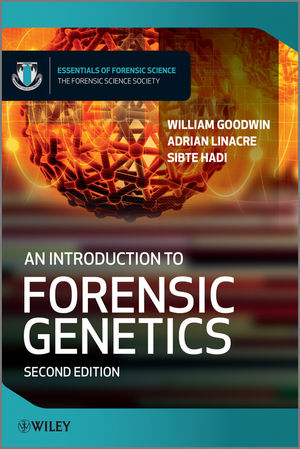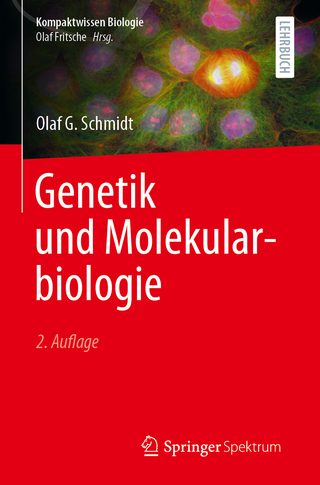
An Introduction to Forensic Genetics
John Wiley & Sons Inc (Verlag)
978-0-470-71019-7 (ISBN)
This is a completely revised edition of a comprehensive and popular introduction to the fast moving area of Forensic Genetics. The text begins with key concepts needed to fully appreciate the subject and moves on to examine the latest developments in the field. Now illustrated in full colour throughout, this accessible textbook includes numerous references to relevant casework. With information on the full process of DNA evidence from collection at the scene of a crime to presentation in a legal context this book provides a complete overview of the field. Key Features:
Greater in-depth coverage of kinship problems now covered in two separate chapters: one dealing with relationships between living individuals and the other covering identification of human remains.
New chapter on non-human forensic genetics, including identification of bacteria and viruses, animals and plants.
Self assessment questions to aid student understanding throughout the text.
Now with full colour illustrations throughout
New companion website
Accessible introduction to forensic genetics, from the collection of evidence to the presentation of evidence in a legal context.
Included in the Forensic Science Society 'Essentials in Forensic Science' book series. This edition is to be included in the Forensic Science Society 'Essentials of Forensic Science' book series aimed at advanced level undergraduates and new practitioners to the field.
Dr Will Goodwin, Senior Lecturer in Forensic Genetics, Faculty of Science and Technology, University of Central Lancashire. Dr Sibte Hadi, Senior Lecturer in Forensic Genetics, Faculty of Science and Technology, University of Central Lancashire. Dr Adrian M. T. Linacre, Department of Pure and Applied Chemistry, University of Strathclyde.
Foreword ix
Preface xi
Preface to first edition xiii
1 Introduction to forensic genetics 1
Forensic genetics 1
A brief history of forensic genetics 2
References 6
2 DNA structure and the genome 11
DNA structure 11
Organization of DNA into chromosomes 11
The structure of the human genome 13
Genetic diversity of modern humans 15
The genome and forensic genetics 16
Tandem repeats 16
Single nucleotide polymorphisms 18
References 19
3 Biological material – collection, characterization and storage 21
Sources of biological evidence 21
Collection and handling of material at the crime scene 23
Identification and characterization of biological evidence 23
Evidence collection 29
Sexual and physical assault 31
Storage of biological material 32
References 32
4 DNA extraction and quantification 37
DNA extraction 37
General principles of DNA extraction 37
DNA extraction from challenging samples 41
Quantification of DNA 45
DNA IQ system 48
References 49
5 Polymerase chain reaction 53
The evolution of PCR-based profiling in forensic genetics 53
DNA replication: the basis of the PCR 54
The components of PCR 54
Taq DNA polymerase 54
The PCR process 56
PCR inhibition 58
Sensitivity and contamination 60
The PCR laboratory 60
Further reading 62
References 62
6 The analysis of short tandem repeats 67
Structure of STR loci 67
The development of STR multiplexes 67
Detection of STR polymorphisms 70
Interpretation of STR profiles 72
Further reading 77
References 77
7 Assessment of STR profiles 81
Stutter peaks 81
Split peaks (±N) 81
Pull-up 83
Template DNA 84
Overloaded profiles 84
Low template DNA typing 84
Peak balance 86
Mixtures 86
Degraded DNA 88
PCR inhibition 90
References 91
8 Statistical interpretation of STR profiles 95
Population genetics 95
Deviation from the Hardy–Weinberg equilibrium 96
Statistical tests to determine deviation from the Hardy–Weinberg equilibrium 97
Estimating the frequencies of STR profiles 98
Corrections to allele frequency databases 98
Which population frequency database should be used? 103
Conclusions 104
Further reading 104
References 104
9 Evaluation and presentation of DNA evidence 107
Hierarchies of propositions 107
Likelihood ratios 109
Two fallacies 113
Comparison of three approaches 114
Further reading 115
References 115
10 Databases of DNA profiles 117
The UK National DNA Database 117
International situation 124
Further reading 128
References 128
11 Kinship testing 131
Parentage testing 131
Punnett square 132
Identification of human remains 139
Further reading 140
References 140
12 Single nucleotide polymorphisms 145
SNPs – occurrence and structure 145
Detection of SNPs 146
SNP detection for forensic applications 148
Forensic applications of SNPs 149
SNPs compared with STR loci 150
References 152
13 Lineage markers 155
Mitochondria 155
Applications of mtDNA profiling 157
Haplotypes and haplogroups 159
The Y chromosome 161
Forensic applications of Y chromosome polymorphisms 162
Further reading 165
References 165
14 Non-human DNA typing 171
Non-human sample types 171
Species identification 173
Linkage to an individual using STR loci 174
Linkage to an individual using mitochondrial loci 175
Microbial DNA testing 176
Concluding comments 176
Further reading 176
References 176
Appendix A Forensic parameters 181
Appendix B Useful web links 183
Glossary 185
Abbreviations 189
Index 193
| Erscheint lt. Verlag | 8.12.2010 |
|---|---|
| Reihe/Serie | Essential Forensic Science |
| Verlagsort | New York |
| Sprache | englisch |
| Maße | 170 x 244 mm |
| Gewicht | 463 g |
| Themenwelt | Studium ► 2. Studienabschnitt (Klinik) ► Humangenetik |
| Studium ► 2. Studienabschnitt (Klinik) ► Rechtsmedizin | |
| Naturwissenschaften ► Biologie | |
| Naturwissenschaften ► Chemie | |
| ISBN-10 | 0-470-71019-5 / 0470710195 |
| ISBN-13 | 978-0-470-71019-7 / 9780470710197 |
| Zustand | Neuware |
| Haben Sie eine Frage zum Produkt? |
aus dem Bereich



